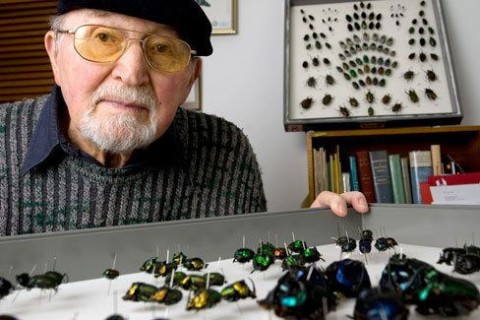
More than 50 species were introduced by CSIRO. The primary aim of the introduction was to reduce the bush-fly population. Of the 50, 43 were released to the field and 23 became established.
George F. Bornemissza – Dung Beetle Guru
The importation of dung beetles into Australia was the brainchild of George Bornemissza, a Hungarian born entomologist who worked for CSIRO from 1955 to 1983. His observation that fly problems in Australia were largely due to the lack of dung beetles adapted to imported livestock led CSIRO to import dung beetles from Africa and Europe from 1965-1985. The introduced beetles had a profound impact on fly populations, and the success of the project largely led to Dr Bornemissza being awarded the Medal of the Order of Australia in 2001. George recognised that there were still gaps to be filled with dung beetles when the project ended, which ultimately led to the Dung Beetle Ecosystem Engineers project. Dr Bornemissza, we salute you!
The Australian Dung Beetle Project
The Australian Dung Beetle Project was active from 1965 through 1985. During that time, George identified nearly 150 species of dung beetle from other countries with potential to fill open niches were livestock dung was not being recycled by native species. He spent nine years in Africa, which has an extensive fauna of large mammalian herbivores. During the twenty years of the project, CSIRO introduced 50 species of dung beetles to Australia, 23 of which have become established. The extent to which these species have spread and the gaps still left unfilled by dung beetles are not fully known, leading to some of the objectives of the DBEE project